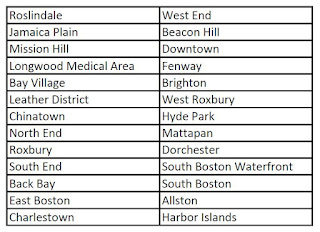Description: Pipelines are believed to bring people convenience of resources, however, they truth is that they can cause serious hazards to people and the environment for many years if they they crack, leak or spill. According to the Pipeline and Hazardous Materials Safety Administration, in a 3 year span there were over 1,800 incidents from various distribution and hazardous liquids.
In looking at the city of Boston, Massachusetts, I looked at data of proposed pipelines. After merging and analyzing data, I found out what towns in Boston, Massachusetts that would be effected by these proposed pipelines.
Table 1: List of towns effected
Analysis: Several proposed pipelines run through Boston, Massachusetts and several connecting pipelines would effect the towns of Roslindale, Jamaica Plain, Mission Hill, Longwood Medical Area, Bay Village, Leather District, Chinatown, North End, Roxbury, South End, Back Bay, East Boston, Charlestown, West End, Beacon Hill, Downtown, Fenway, Brighton, West Roxbury, Hyde Park, Mattapan, Dorchester, South Boston Waterfron, South Boston, Allston, Harbor Islands.
Map: Proposed Pipelines to Neighborhoods in Boston
Sources: ArcMap, ArcGIS, Pipeline and Hazardous Materials Safety Administration
https://www.fractracker.org/2013/04/us-pipelines-average-incidents-are-a-daily-occurrence/
Limitations: While many towns are effected, this city is highly populated and adding population data would be benefical as well as evacuation routes.
Sources: ArcMap, ArcGIS, Pipeline and Hazardous Materials Safety Administration
https://www.fractracker.org/2013/04/us-pipelines-average-incidents-are-a-daily-occurrence/







